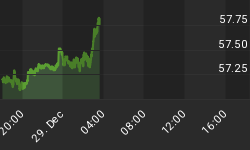With Alan Greenspan getting more TV time than Regis Philbin these days, we’ll provide only a quick summary and move on: The economy is still weak. More rate cuts to come. Productivity will save the day.
Applied Micro Circuits apparently paid too much in its quest for productivity. When the company reported that its revenues dropped 66% sequentially, it also reported a write-off $3.1 billion in goodwill associated with acquisitions. That $3.1 billion happens to total more than half the stock’s market cap, and it represents 70 times the company’s sales for the quarter. The company, no doubt, woudl prefer investors focus on its pro forma numbers that exclude the write-down and other special charges.
Nokia would prefer that any investors calling their broker to sell AMCC shares do so on a new cell phone. Worldwide mobile phone sales are expected to fall this year for the first time ever. According to Bloomberg, shipments of new mobile phones will fall 8.6% this year. That would put annual handset sales down around 370 million. Not long ago analysts predicted handset sales would reach 650 million.
The six or seven consumers who don’t own a cell phone might get one once they realize all that money they were going to save on local phone service has yet to materialize. Despite promises of lower rates by the government and the telephone industry, callers will soon being paying 65 cents more per month for local phone service, according to an AP story. Last May the FCC approved an industry plan that promised a number of consumer benefits. For example, the local companies were to take the $1 billion in higher local charges to reduce fees to long distance carriers. But the three major long distances carriers have yet to pass on that savings in the form of lower long distance rates, at least not as of July 1. If savings do materialize, it may be tough for consumers to find them. Susan Tompor of the Detroit News spoke for many of us recently in a column describing her quest to get a handle on the slippery world of long distance.
Despite their reluctance to buy new cell phones, consumers are still keeping the economy above water. The University of Michigan’s preliminary consumer sentiment index for July came in higher than June’s final reading. And once again, Americans increased spending on cars and trucks last month. Overall retail sales disappointed, however, rising only 0.2% in June. Without the auto buying binge, retail sales sank by 0.2%. Meanwhile, first-time requests for unemployment benefits hit a 9-year high.
That’s no reason not to buy a home, however. Home sales in Los Angeles County last month came in at their third highest level in 12 years. The median sales price spiked 12% year over year to a record $228,000, according to the LA Times. "It’s feverish," according to one LA County realtor. Orange County did not fare as well, with home sales down 15% after falling sharply in prior months as well. The difference? Demand for high dollar homes has fallen while demand for mid-priced homes is hanging in there.
There is no such ambiguity in the industrial sector as it remains bleak. June’s drop in manufacturing activity marked the ninth consecutive decline. The Fed’s production measure fell 0.7% vs. the 0.5% estimate. U.S. companies have cut production so much that operating capacity has reached its lowest point in almost 18 years.
Finally, the chip sector continues to chip away at the "V" recovery scenario. Today Intel reported that second quarter sales were almost $2 billion lower than prior year levels. Just this week Intel cut prices by 37% on its fastest Pentium III mobile processors. And these were just introducted in March.
Yesterday, the trade association, Semiconductor Equipment and Materials International, figured sales this year would fall 35% from 2000. They predicted that chip-equipment makers would not see a return to 2000 levels until at least 2004. Even the "U"scenario is starting to look more like an "L."
















